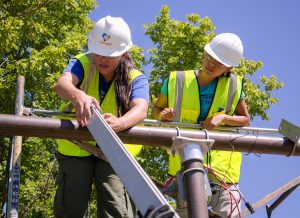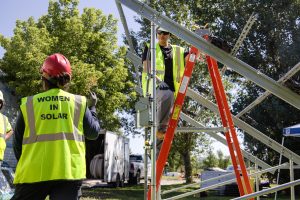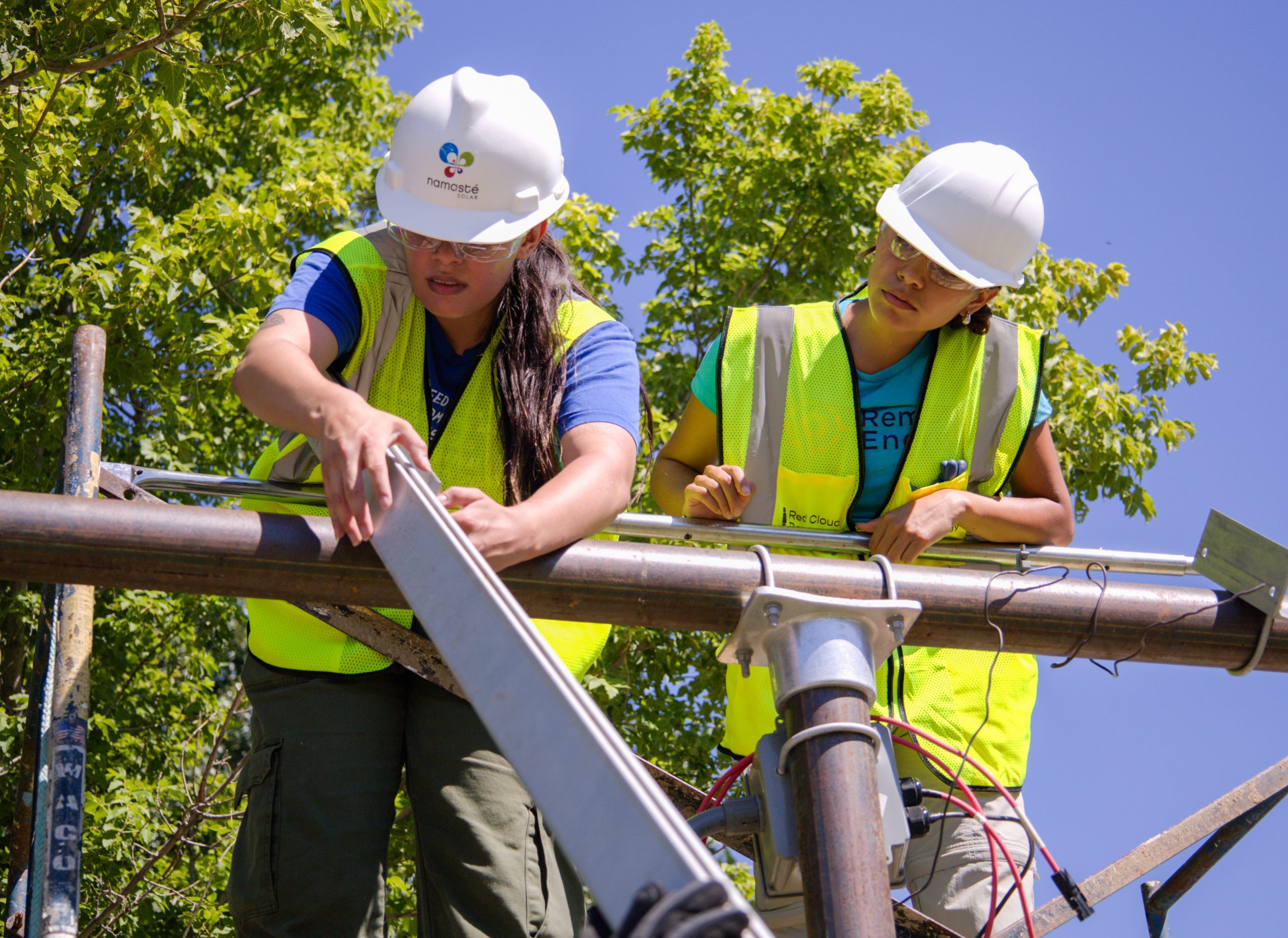ALBUQUERQUE, N.M. — Native American women nationwide are getting a special opportunity. They’re receiving hands-on training in photovoltaic panel installation, with the goal to equip them to set up residential and community systems on tribal land.

Sandra Begay, an engineer at Sandia National Laboratories, and a member of the Navajo Nation, serves as one of four mentors in this initiative.
The training is part of a Cooperative Research and Development Agreement between Sandia and Red Cloud Renewable, a nonprofit in Pine Ridge, South Dakota, dedicated to helping tribal members and communities achieve energy independence.
The Bridging Renewable Industry Divides in Gender Equality, or BRIDGE, Program offers an immersive five-week in-person training that includes hands-on photovoltaic installation.
Begay met with the first cohort in South Dakota in August.
“Five weeks is a long time to be away from home,” Begay said. “I provided encouragement and reminded the women that they made the right choice to participate in this program. We also used the time to reflect on what they learned.”
The training covers the components of photovoltaic systems and their correct and safe installation.
Begay also helped the women understand the energy landscape in tribal communities.
“There are more than 20,000 homes on the Navajo Nation and some rural homes on the Hopi reservation that don’t have electricity. These are off-grid homes,” Begay said, adding that many homes rely on diesel generators. “We’re looking at a clean energy future. We want to move away from those types of fuels and look at clean energy sources such as solar.”
Begay said the Navajo Nation and Mountain Ute in Colorado are establishing large-scale photovoltaic plants.
“This program will provide participants with new employment opportunities and a better understanding of where we’re headed with clean energy,” Begay said.
Red Cloud Renewable will assist women with resume writing, interview preparation, networking and job placement.
Begay, who has dedicated her more than 30-year career to establishing renewable energy sources in Native American communities, plans to stay in contact with participants.
“I am making a long-term commitment to the women in the BRIDGE Program,” Begay said. “I will share any job openings I see with them and support them in their job searches.”
Teamwork for the future

Begay said that one non-technical aspect emphasized in the training is the importance of teamwork in photovoltaic installation.
“Photovoltaic installation happens with a team of people. How do you work through that group dynamic? How do you work with each other as a team? Those questions are underemphasized in the work we do. They’re going to rely on each other when installing photovoltaic systems,” she said.
Alicia Hayden, communications manager for Red Cloud Renewable, said she got a sense of joy seeing the women work together.
“What stood out to me was the incredible camaraderie among the women,” Hayden said. “They were genuinely supportive of each other and grateful to be participating in this program alongside women who share similar backgrounds.”
The Department of Energy Solar Energy Technology Office is funding the project over the next couple of years, with plans to train two additional cohorts, totaling about 45 women.
“These women will be equipped to take on installer jobs within their own reservations, bringing valuable skills and opportunities for sustainable development to their people,” Hayden said.
Native American women are significantly underrepresented in the solar installation field, making up just 0.05% of the industry, according to Red Cloud Renewable.
Begay believes the BRIDGE Program is a step in the right direction to change that.
“It’s very gratifying both professionally and personally to see where we can help women who are underrepresented in the workforce, let alone in a unique technology like photovoltaic installation,” Begay said. “We’re seeding ideas for the women that they would never have thought of doing. I think that’s what’s unique.”

